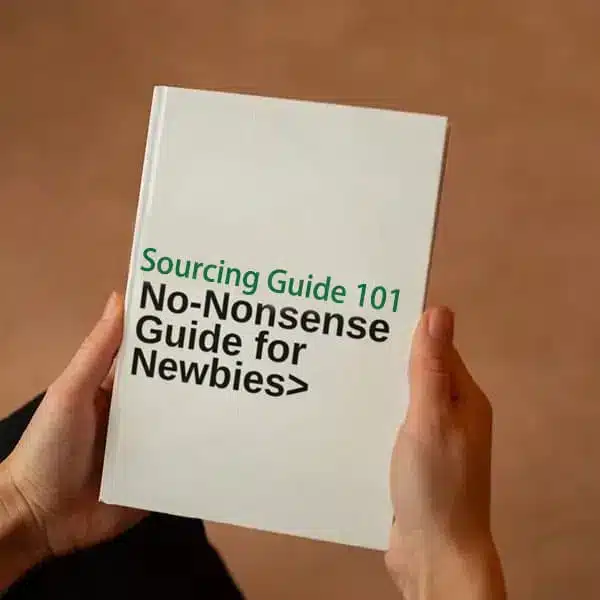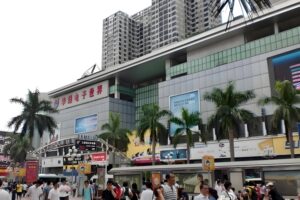Introduction – Why Getting the Right Quote Matters
So, you’ve found some promising suppliers (using our Chapter 6 checklist, right?). Now it’s time to talk numbers. Getting a price quote1 seems simple, but if you don’t understand exactly what that price includes, you could be in for some nasty surprises later.
We’re talking about those confusing acronyms like FOB, EXW, DDP2… what do they even mean? And how do things like quantity or packaging change the price? Understanding this stuff is super important for figuring out your real costs and making smart decisions for your business.
Let’s break it down together, nice and easy, so you can get quotes that make sense and avoid those hidden costs.
Step 1 – Why Do Trade Terms (Incoterms®) Matter So Much?
Ever planned a group trip where nobody was sure who was booking the flights, who was arranging the hotel, and who was paying for taxis? Confusing, right? Trade terms, officially called Incoterms®3, are like the rules for international shipping4 that prevent that kind of confusion.
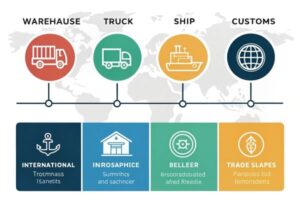
-
What They Do: Created by the International Chamber of Commerce (ICC), these terms clearly define:
- Who Pays What: Which costs are the supplier responsible for, and which costs are you (the buyer) responsible for? (Think local transport, shipping, insurance, customs fees5).
- Who Handles What: Where does the supplier’s responsibility for the goods end, and where does yours begin? (When do you take ownership and risk?)
-
Why You Need to Care: When you get a quote, the price is tied to a specific trade term. A $5 price "EXW" is VERY different from a $5 price "DDP". Knowing the term tells you exactly what’s included in that price and what extra costs you’ll need to budget for later (like international shipping or import taxes). Getting this wrong can wreck your profit margins.
In short: Trade terms bring clarity and prevent arguments about who was supposed to do or pay for what. Always make sure you know which term your quote is based on.
Step 2 – FOB, EXW, CIF, DDP: Decoding the Alphabet Soup. Which is Best?
Okay, let’s look at the most common terms you’ll see. There’s no single "best" one – it depends on how much control you want and how much work you want to do yourself.

-
EXW (Ex Works): The "Bare Bones" Price
- What it means: This is basically the price of the product sitting at the factory door. The supplier just makes it available for you to pick up.
- Your Job: You (or someone you hire) are responsible for everything else: picking it up from the factory, trucking it to the port or airport, handling export customs in China, paying for all international shipping and insurance, handling import customs in your country, and final delivery.
- When it’s useful: Maybe if you’re buying from multiple suppliers located close together and want to arrange your own single truck to pick everything up and consolidate it yourself. It gives you maximum control over logistics if you know what you’re doing.
- Heads Up: For beginners, EXW can be a hassle as you need to manage local Chinese logistics, which can be tricky without help (like from a sourcing agent.). You need to budget for all those extra shipping steps.
-
FOB (Free On Board)6: The Popular Choice
- What it means: The supplier’s price includes getting the goods loaded onto the ship (or plane) at a specific port or airport in China (e.g., "FOB Shenzhen" or "FOB Shanghai"). They handle the local transport to the port and the export customs clearance in China.
- Your Job: Once it’s on the vessel, it’s your turn. You pay for the main international shipping (ocean freight or air freight), insurance, import duties and taxes in your country, customs clearance at your end, and delivery from your port to your warehouse.
- Why it’s popular: It’s a good balance. The supplier handles the local Chinese part, which can be tricky for foreigners. You then take control of the international shipping, allowing you to choose your own shipping company (freight forwarder) and potentially find better rates than the supplier might offer.
- Location Matters Example: If you have one supplier near Shenzhen (in the Pearl River Delta) quoting FOB Shenzhen and another near Shanghai quoting FOB Shanghai, you’ll need your freight forwarder to coordinate pickups from both ports, which might be less efficient than if both suppliers could ship from the same port. Sometimes, asking a supplier further inland to quote FOB from a major port like Shenzhen might involve extra trucking costs for them, which they might pass on to you. Working with suppliers in major hubs like the Pearl River Delta often simplifies FOB logistics.
-
CIF (Cost, Insurance, and Freight)7: Seems Easy, But Be Careful.
- What it means: The supplier arranges and pays for shipping the goods and basic insurance to a named port in your country (e.g., "CIF Los Angeles").
- Your Job: You take over once the ship arrives at your country’s port. You’re responsible for import customs clearance, duties and taxes, and unloading fees at the port (which can sometimes be surprisingly high with CIF.), plus trucking to your final destination.
- Why be careful? CIF sounds convenient because the supplier handles shipping. However, you have no control over the shipping company they choose or the price they negotiate. The included "insurance" is usually very minimal (often just covering total loss). The biggest issue? The destination port handling fees charged by the shipping company’s agent (chosen by your supplier) can often be much higher than if you arranged shipping yourself under FOB terms.
- Think Total Cost: That "low" CIF price often doesn’t reflect the expensive handling charges waiting for you at your home port.
-
DDP (Delivered Duty Paid)8: The "All-Inclusive" Option
- What it means: The supplier handles everything. They manage shipping, insurance, import customs clearance, and they pay the import duties and taxes. The goods arrive at your specified address (like your warehouse or even an Amazon FBA center) with all costs covered up to that point.
- Your Job: Basically, just receive the goods.
- Why choose it? It’s the absolute easiest option for you, zero hassle. Great if you’re just starting and want maximum simplicity.
- The Catch: It’s almost always the most expensive option per item. The supplier takes on all the risk and work, and they build a healthy margin into the DDP price to cover themselves (and potential currency fluctuations or unexpected fees). You have zero control over shipping methods or costs.
- DDU Note: You might sometimes see DDU (Delivered Duty Unpaid). It’s similar to DDP, but you pay the import duties/taxes when the goods arrive in your country. DDP is generally more common now.
Which is Best for You?
- Newbie wanting max simplicity? DDP might be worth the extra cost initially.
- Wanting more cost control & working with a freight forwarder? FOB is often the sweet spot.
- Buying from multiple local suppliers & consolidating yourself? EXW could work if you have help.
- CIF? Often best avoided unless you fully understand and trust the total landed cost including destination fees.
Step 3 – Ask for Prices Based on Quantity. (Volume Discounts)
It’s simple logic: making 5,000 phone cases usually costs less per case than making just 500. Factories get more efficient when they produce larger batches (this is called "economies of scale9"). So, don’t just ask for "the price" – ask for prices at different quantities.
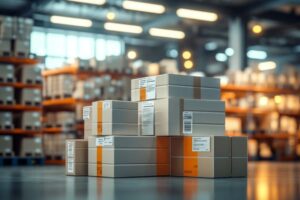
- Why Ask? You need to know the supplier’s Minimum Order Quantity (MOQ)10 – the smallest amount they’re willing to produce for you. But you should also ask for prices at higher quantities. This helps you see how much you could save per item if you order more.
- What to Ask For: "Could you please provide pricing for this item at your MOQ, and also at [example: 1,000 units], [3,000 units], and [5,000 units]?"
- Example (Custom Notebooks):
- MOQ 500 units: $2.50 each
- 1,000 units: $2.20 each
- 3,000 units: $2.00 each
- 5,000 units: $1.95 each
- What to Expect: Usually, the biggest price drops happen between the MOQ and the next few tiers. After a certain point (maybe 5k or 10k units), the price might not decrease much further as the factory hits its maximum efficiency or raw material discounts level off.
- Smart Move: Getting these price breaks helps you calculate profitability at different order sizes and decide what makes the most sense for your budget and sales forecasts.
Step 4 – Packaging & Private Label Costs: The Hidden Extras.
You get a quote for $3 per item. Great. But wait… what kind of packaging does that $3 include? And what if you want your logo on it? These things often cost extra and can significantly impact your final cost per unit. Always ask.
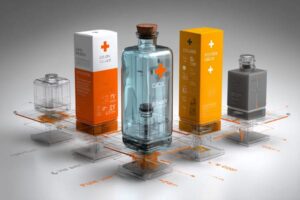
- Standard Packaging11: What does the supplier consider "standard"? Often, it’s the absolute minimum – maybe just a thin plastic polybag, or bulk packed loosely in a master carton.
- Ask: "What kind of packaging is included in the quoted price?" "Can you send a picture of the standard packaging?"
- Custom Packaging12: Want something nicer? Like a custom-printed color box with your brand design? Or maybe you need extra protection like bubble wrap or foam inserts?
- Expect Extra Costs: This will cost more. There might be a setup fee for printing plates, plus a cost per box or per insert. Get a specific quote for the exact packaging you want.
- Example (Selling Skincare Bottles): The basic $2 quote might be for the bottle itself. A plain white tuck box might add $0.15. A custom-printed, full-color box with a glossy finish could add $0.40 or more. Don’t assume it’s included.
- Private Labeling (Your Logo)13: Want your brand logo printed directly on the product? Or on the packaging?
- Expect Extra Costs: There’s usually a cost involved – maybe a one-time setup fee for creating the printing screen or mold insert, and/or a small charge per unit for the printing itself.
- Ask: "What is the cost to add my logo to the product/packaging?" "Are there any setup fees?"
Key Takeaway: Never assume packaging or branding is included unless the quote explicitly says so. Clarify these details before you place your order to avoid budget blowouts and arguments later.
Step 5 – Is the Price for Fresh Production or Old Stock? (Quality Check)
Sometimes, a supplier might offer you a super tempting, unbelievably low price. Before you jump on it, ask one crucial question: "Is this price for brand new production based on my order, or is it for existing inventory/overstock?"
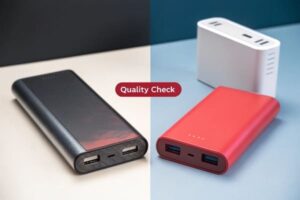
-
Why it Matters:
- Overstock/Inventory: This is stock the factory already has on hand, maybe from a cancelled order, a production overrun, or just items that didn’t sell. The low price is to clear warehouse space.
- The Risks: This stock might be old (potentially dusty, faded, or slightly damaged from sitting around). Quality might be inconsistent. The available quantity might be limited. If you reorder later, you’ll likely pay a higher price for new production, and the quality might even be different.
- New Production14: This means the factory will make the goods specifically for you after you place the order.
- The Benefits: You get freshly made products. Quality should be consistent (especially if you approved a sample). You can usually reorder the same item later with consistent results. It typically costs a bit more than clearance stock.
-
Example (Fashion Accessories): A supplier offers trendy scarves at $1 each. Sounds amazing. But it turns out this is leftover stock from last season. Some might have minor flaws, and they only have 200 pieces left in random colors. If you need 500 consistent scarves for your brand, this deal isn’t helpful. You need a quote for new production.
Best Practice: Unless you are specifically looking for a one-time clearance deal and understand the potential risks, always aim to get quotes based on new production. This ensures better quality control and consistency for your business, especially if you plan to reorder. Confirm with the supplier.
Conclusion
That was a lot, but understanding these details about quotes is vital. By clarifying the Trade Term (Incoterm®)15, asking about Quantity Pricing, confirming Packaging & Branding Costs, and checking if the price is for New Production, you protect yourself from surprises.
This helps you calculate your true landed cost (the total cost to get the product into your hands) much more accurately. Asking clear questions upfront saves you money and headaches down the road. Now you’re ready to get quotes like a pro.
-
Getting an accurate price quote is essential for budgeting and ensuring you understand all potential costs involved. ↩
-
Understanding these acronyms is crucial for accurate pricing and avoiding hidden costs in your business transactions. ↩
-
Understanding Incoterms® is crucial for anyone involved in international trade, as they define responsibilities and costs clearly. ↩
-
Exploring best practices in international shipping can help you avoid costly mistakes and ensure smooth transactions. ↩
-
Learning about customs fees is essential for budgeting and compliance in international shipping, preventing unexpected costs. ↩
-
Understanding FOB is crucial for managing international shipping effectively. Explore this link to gain insights into its implications. ↩
-
CIF can seem convenient but may hide costs. Learn more about its risks to make informed shipping decisions. ↩
-
DDP offers simplicity but at a cost. Discover the pros and cons to determine if it’s right for your shipping needs. ↩
-
Economies of scale can significantly reduce your costs as production increases. Discover how this concept works and its benefits for your business. ↩
-
Understanding MOQ is crucial for budgeting and planning your orders effectively. Explore this link to learn more about MOQ and its implications. ↩
-
Knowing what standard packaging entails helps you make informed decisions and avoid hidden costs. ↩
-
Understanding the costs of custom packaging can help you budget effectively and avoid unexpected expenses. ↩
-
Exploring private labeling costs can ensure your branding is effectively integrated without overspending. ↩
-
Exploring this resource will help you understand the advantages of new production, ensuring better quality and consistency for your orders. ↩
-
Understanding Trade Terms is crucial for navigating international shipping and costs effectively, ensuring you avoid unexpected fees. ↩


